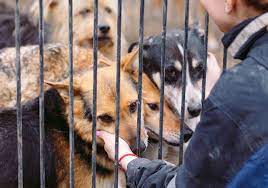Pet owners considering switching to homemade dog food for a diet they assume is more wholesome and better adapted humans are increasingly turn to this approach. Cooking up some food for your dog might sound appetizing, but it is important to know the advantages and disadvantages before you take that leap. Our comprehensive manual on homemade dog food including benefits, disadvantages and how to ensure that the diet is balanced with a discussion of key nutrients as well as common malpractices plus tips for starting out. Whether you are intrigued by the idea of homemade dog food due to health considerations or simply wondering if it is feasible, this article will provide valuable insights that should help.
Table of Contents
ToggleWhy Make Your Own Dog Food?
There are various reasons why dog owners opt for homemade food such as;
Control Over Ingredients – when you make your own dog food, who choose the quality and source of ingredients ensures freshness with no fillers or additives which are so often found in commercial pet foods.
Personalized Nutrition: You can tailor the recipes to suit your dog’s individual dietary needs, like allergies and sensitivities or health issues.
Of course, there are health benefits: some dogs do particularly well on making a home-made diet and may have improved coat, energy levels or digestion.
Transparency and Trust – Known what goes into your dog’s food can give you peace of mind about the nutrition and safety it provides.
Advantages of Homemade Dog Food
- Quality Ingredients
By cooking with fresh, whole ingredients you are able to steer clear of the preservatives, artificial flavors and low grade fillers that can be found in commercial dog food.
- Customization
To make sure they get the nutrition that fits their age, size and activity level you can adjust dog food formulas to your furry friend.
- Allergies and Sensitivities
Homemade diets can be good for dogs with food allergies or sensitivities, as they allow you to remove problematic ingredients and use easy on their stomach alternatives.
- Control Over Processing
You have a say in how your pet food is prepared and cooked, which can minimize the chances of contamination or spoilage that may happen with commercial foods.
Pros and Cons
- Nutritional Balance
As a result, hitting the right nutritional balance is hard but very necessary. When making your dog’s food at home, you will need to ensure that the proper ratio of protein and carbohydrates could be challenging as well it is more alike this with extra fats just make sure not offering enough vitamins and minerals for their nutritional demands.
- Time and Effort
Home-cooked diets take time to plan, shop for foods and prepare meals. Not the most practical for people that are short on time or domestically challenged.
- Deficiency or excess risk
Home made diets may be lacking in critical nutrients (eg calcium, vitamins) or contain excesses of other nutrients (eg fats), if they are not carefully planned and being fed with veterinary guidance over an extended period can impact your dog’s health.
- Cost
The issue is that, depending on the costs in your area for various quality ingredients combined with how much you have to feed him per day; making homemade dog food be more costly than commercial foods (for those who are charging rock bottom prices or selling high end premium pet menus, such as I do).
Homemade Dog Food Tips
- Consult Your Veterinarian
Before you start on any homemade diet at home, check with your vet so to examine the healthiness of your dog and determine if it has a good fit responsive for applying raw or commercial food. Moreover, they can offer you some advice on how to structure your diet for the best results too.
- Use Reliable Recipes
To all parents please get your recipes from reliable sources ie vet nutritionist, repected pet canine diet books or reputable sites of home prepared food for dogs. When you follow recipes, the only way to make sure your meals are balanced is by stickigng to the exact ingredients and portion sizes listed.
- Balance Over Variety
Prioritize achieving nutritional adequacy rather than a long list of ingredients. Regularity as well as focusing in standard nutrients are very important in your dog remaining healthy.
- Monitor Your Dog’s Health
Track your dog’s weight, energy level, coat type and stool quality periodically. Make changes to their diet according to how well they respond or feedback from your vet on the homemade food.
Conclusion
For many pet owners, prioritizing transparency and sourcing quality ingredients in their dog’s diet incentivizes them to prepare homemade food for their four-legged friend. But it requires planning, nutritional balance and veterinary supervision to ensure that it is tailored for your dog individual needs. Check the potential benefits against the challenges before making this switch and consult a veterinarian for personalized advice if you are interested in homemade dog food. Made using the right approach and with due diligence, homemade dog food may provide a healthy choice to commercial foods that could boost your pet’s wellness.
For more similar info :
































